 W
WBadnjak, refers to a log brought into the house and placed on the fire on the evening of Christmas Eve, a central tradition in Croatian Christmas celebration, much like a yule log in other European traditions. In Croatian the name for Christmas Eve is derived from the term badnjak. The log is cut with great ceremony on Christmas Eve morning, which for Roman Catholic Croats is December 24. The cutting, preparation, bringing in, and laying on the fire are surrounded by elaborate religious rituals, with many regional variations. The log is kept burning throughout Christmas Day.
 W
WBaška tablet is one of the first monuments containing an inscription in the Croatian recension of the Church Slavonic language, dating from c. 1100 AD. The inscription is written in the Glagolitic script. It was discovered in 1851 near the village of Baška on the Croatian island of Krk.
 W
WThe Branimir inscription is the oldest preserved monument containing an inscription defining a Croatian medieval ruler as a duke of Croats – Dux Cruatorum. The inscription was originally a part of templon of a church in Šopot at Benkovac built by Duke Branimir, who ruled Croatia from 879–892.
 W
WThe Busójárás is an annual celebration of the Šokci living in the town of Mohács, Hungary, held at the end of the Carnival season ("Farsang"), ending the day before Ash Wednesday. The celebration features Busós and includes folk music, masquerading, parades and dancing. Busójárás lasts six days, usually during February. It starts on a Thursday, followed by the Kisfarsang carnival on Friday, with the biggest celebration, Farsang vasárnap on the seventh Sunday before Easter Sunday; the celebration then ends with Farsangtemetés on the following Tuesday . These traditional festivities have been inscribed on the Representative List of the Intangible Cultural Heritage of Humanity of the UNESCO in 2009.
 W
WThe Catholic Church in Croatia is part of the worldwide Catholic Church that is under the spiritual leadership of the Pope, Roman Curia and the Croatian Bishops' Conference. Its administration is centered in Zagreb, and it comprises five archdioceses, 13 dioceses and one military ordinariate. Cardinal Josip Bozanić is the Roman Catholic Archbishop of Zagreb.
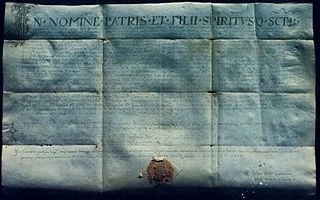 W
WCharter of Duke Trpimir, also known as Trpimir's deed of donation is the oldest preserved document of the Croatian law, the oldest from the court of one of the Croatian rulers and the first national document which mentions the Croatian name. Charter, dated to 4 March 852, is not preserved in its original form but in five subsequent transcripts out of which the oldest is from year 1568.
 W
WCroatian art of the 20th century, that is visual arts within the boundaries of today's Croatia, can be divided into modern art up to the Second World War, and contemporary art afterwards.
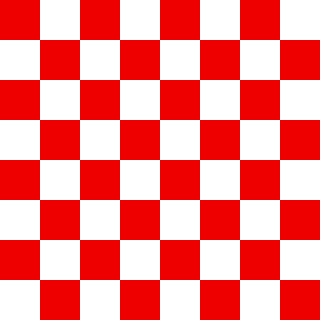 W
WThe Croatian checkerboard or chequy is the national symbol of Croatia and Croats, it covers the main shield of Croatian coat of arms above which is the crown with five smaller shields. Squares are always arranged correctly and they are red and white. It is considered to be one of the oldest national symbols in Europe.
 W
WThe Croatian interlace or Croatian wattle, known as the pleter or troplet in Croatian, is a type of interlace, most characteristic for its three-ribbon pattern. It is one of the most often used patterns of pre-romanesque Croatian art. It is found on and within churches as well as monasteries built in early medieval Kingdom of Croatia between the 9th and beginning of the 12th century. The ornamental strings were sometimes grouped together with animal and herbal figures.
 W
WThe Croatian State Archives are the national archives of Croatia located in its capital, Zagreb. The history of the state archives can be traced back to the 17th century. There are also regional state archives located in Bjelovar, Dubrovnik, Gospić, Karlovac, Osijek, Pazin, Rijeka, Sisak, Slavonski Brod, Split, Varaždin and Zadar.
 W
WThe Declaration on the Common Language was issued in 2017 by a group of intellectuals and NGOs from Croatia, Bosnia and Herzegovina, Montenegro, and Serbia who were working under the banner of a project called "Language and Nationalism". The Declaration states that Croats, Bosniaks, Serbs and Montenegrins have a common standard language of the polycentric type.
 W
WThe Dubrovnik Summer Festival (Croatian: Dubrovačke ljetne igre; [dubrɔʋatʃkɛ ʎɛtnɛ iɡrɛ] is an annually-held summer festival instituted in 1950 in Dubrovnik, Croatia. It is held every year between 10 July and 25 August.
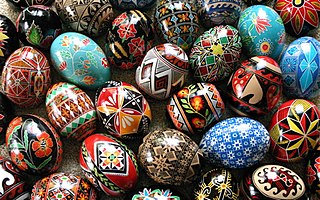 W
WThe tradition of egg decoration in Slavic cultures originated in pagan times, and was transformed by the process of religious syncretism into the Christian Easter egg. Nevertheless, these decorated eggs have retained much of their pagan symbolism.
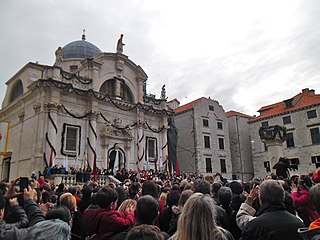 W
WFestivity of Saint Blaise, the patron of Dubrovnik is a festivity organised on February 3 continuously since year 972 in the City of Dubrovnik, Croatia on the occasion of the celebration of Saint Blaise's day. Festivity is based on the legend of the appearance of St. Blaise who helped the people of Dubrovnik to defend their town against Republic of Venice. Festivity is attended by a large number of people that include residents of the city, surrounding areas, other parts of Croatia and neighboring countries, as well as tourists, representatives of state and local authorities and Roman Catholic Church. Festivity was made a part of UNESCO Intangible Cultural Heritage in 2009.
 W
WMatica hrvatska is the oldest independent, non-profit and non-governmental Croatian national institution. It was founded on February 2, 1842 by the Croatian Count Janko Drašković and other prominent members of the Illyrian movement during the Croatian National Revival (1835–1874). Its main goals are to promote Croatian national and cultural identity in the fields of art, science, spiritual creativity, economy and public life as well as to care for social development of Croatia.
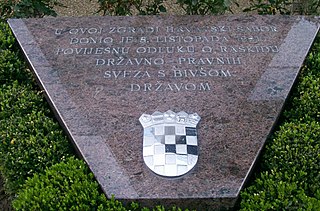 W
WCroatian Independence Day is a memorial day in Croatia, marked yearly on 25 June that celebrates the decision of the Croatian Parliament to declare the independence of Croatia from the Socialist Federal Republic of Yugoslavia.
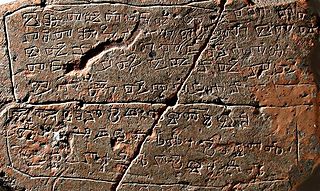 W
WInscription of Župa Dubrovačka is a Glagolitic inscription dated to the 11th century.
 W
WIris croatica is a bearded rhizomatous species of iris endemic to Croatia.
 W
WKafana / kavana / kahvana ; kafene\kafeneja, kafeana, kavarna ; are terms used in most former Yugoslav countries and Albania for a distinct type of local bistro which primarily serves alcoholic beverages and coffee, and often also light snacks (meze) and other food. Many kafanas feature live music performances.
 W
WThe Poklad (Carnival) event held yearly on the remote Adriatic Island of Lastovo is one of the more distinctive and authentic carnival traditions celebrated in all of Croatia today. All the island residents participate by wearing folk costumes. The origins of the Lastovo carnival go back to a historical event. Legend has it that Catalan pirates attacked neighbouring Korčula and sent a Turkish messenger to Lastovo to tell the islanders to surrender or they would be next. The inhabitants of Lastovo did not let themselves be intimidated – instead they armed themselves and went on the attack. The women and children walked to Hum barefoot from Lastovo and prayed to Sv. Jure for help and their prayers were answered: a storm destroyed the pirates' ships and the inhabitants of Lastovo caught the messenger. In order to mock him, he was taken through the village on the back of a donkey and was afterwards sentenced and burned to death. This event is celebrated through the Poklad every year over a period of two days just before Lent.
 W
WLaw code of Vinodol or Vinodol statute is one of the oldest law texts written in the Chakavian dialect of Croatian language and is among the oldest Slavic codes. It was written in the Glagolitic alphabet. It was originally compiled in 1288 by a commission of 42 members in Novi Vinodolski, a town on the Adriatic Sea coast in Croatia, located south of Crikvenica, Selce and Bribir and north of Senj. However, the code itself is preserved in a 16th-century copy.
 W
WMeđimurska popevka is a folk song originating from the Međimurje region of northern Croatia. It was added to UNESCO's Representative List of the Intangible Cultural Heritage of Humanity in 2018.
 W
WThe Ministry of Culture and Media is a ministry of the Croatian government in charge of preserving the country's natural and cultural heritage and overseeing its development. The ministry in its present form was created in 1994 in the Cabinet of Nikica Valentić, as the culture portfolio had previously been part of the Ministry of Education, Culture and Sports (1990–93) and the Ministry of Culture and Education (1993–94).
 W
WThe Miroslav Krleža Institute of Lexicography is Croatia's national lexicographical institution. Based in Zagreb, it was originally established in 1950 as the national lexicographical institute of the Socialist Federal Republic of Yugoslavia. It was renamed after the Croatian writer and its founder Miroslav Krleža in 1983.
 W
WMoreška is a traditional sword dance from the town of Korčula, on the Croatian island of the same name in the Adriatic. Dating back hundreds of years, the Moreška is an elaborate production involving two groups of dancers, engaging in a mock battle over the fate of a veiled young woman. Originally performed rarely on special occasions, in modern times the Moreška is performed weekly for visiting tourists. The two sides of battling dancers were originally Moors and Christians, recalling the Spanish battles of the Reconquista in the Middle Ages. However, at some point in the 19th century in Korčula, the sides changed from Christians vs. Moors, to Croats vs. Moors, or simply "White" and "Black", with the non-Moor side emerging victorious.
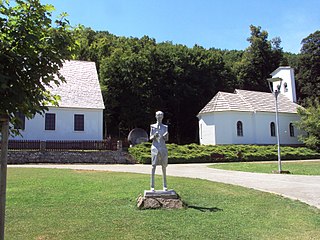 W
WThe Nikola Tesla Memorial Center is a cultural-historical site and museum located in Smiljan, Croatia, located at the birthplace of Nikola Tesla, one of the world's foremost electrical researchers and inventors. It is dedicated to Tesla, who was born in 1856 in his parents' house in Smiljan, then part of the Croatian Military Frontier within the Habsburg Monarchy. The young scientist later left his homeland to work in the United States of America. The Lika Museum in nearby Gospić administers the site.
 W
WPacta conventa was an agreement concluded between King Coloman of Hungary and the Croatian nobility in 1102 or afterwards, defining the status of Croatia in the union with Hungary. The earliest manuscript of the document is of the fourteenth century, so some historians believe it is likely a forgery.
 W
WPisanica is a decorated Croatian Easter egg that comes from an old Slavic custom dating back to pagan times. During Easter, eggs would be painted with bright colors, and would be given as gifts, especially to young children or a significant other. Before paint became common, villagers would have to use whatever resources they had available around them to make the dyes and paints themselves. The most common color for eggs was red, due to the abundance of red beets and other vegetables. In the Međimurje area, soot would often be mixed with oak to make a dark brown color. Green plants would be used for green dye. The word pisanica is derived from the Croatian word that means "writing." The most common phrase put on pisanicas is Happy Easter, or "Sretan Uskrs." Other common decorations are doves, crosses, flowers, traditional designs, and other slogans wishing health and happiness.
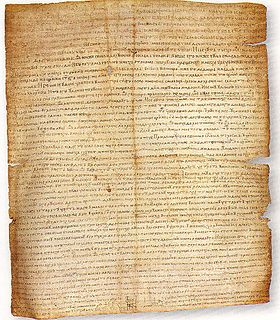 W
WThe Poljica Statute is the most important historical source for the Republic of Poljica. The statute determined the law of Poljica, which is, by its form, style, content and establishment of social-economic relations, totally different from the rest of Croatian statutes, but remarkably similar to some legal code of Kievan Rus', namely Russkaya pravda, from the same period.
 W
WRed Peristyle was an urban intervention in Diocletian's Palace in the city of Split, Croatia, performed on 11 January 1968, when its peristyle was painted red. This was also the name of the group responsible for the intervention, which was formed in 1966. The group had a destructive approach similar to Marcel Duchamp's post-urban art of the 1960s. A number of other actions were recognized as the work of the same artistic group.
 W
WThe Sinjska alka [siɲska alka] is an equestrian competition held in the Croatian town of Sinj every first Sunday in August since 1715. It commemorates a Croatian–Venetian victory in the Ottoman–Venetian war on August 14, 1715 in which the local Christian population of around 700 Croats in cooperation with a smaller number of Venetians managed to defend Sinj against 60,000 Ottoman soldiers led by Mehmed-paša Ćelić. Because of this victory, the Venetians retained control over Sinj and integrated it into the Venetian Dalmatia in accordance to the terms of the Treaty of Passarowitz signed in 1718.
 W
WTheatre in Croatia refers to the history of the performing arts in Croatia, or theatrical performances written, acted and produced by Croatians. Croatian theatre generally falls into the Western theatre tradition, with influences especially from Italy, Germany, Austria and other European nations.
 W
WVinjak is a brand of brandy produced by the Serbian company Rubin. Previously named as Cognac, it was renamed when stricter laws governing what may be branded Cognac came into force. The drink itself is light brown, and contains 40% alcohol.
 W
WWooden toys of Hrvatsko Zagorje are traditional wooden toys made in the region of Zagorje in Croatia. The method of production, from starting with raw wood to finishing applications of paint, has been passed down from generation to generation, with families continuing to use traditional techniques even in modern times.
 W
WZvončari ("bellmen") is the characteristic folk custom maintained in the region around Rijeka, Croatia. It was added to UNESCO's Representative List of the Intangible Cultural Heritage of Humanity in 2009.